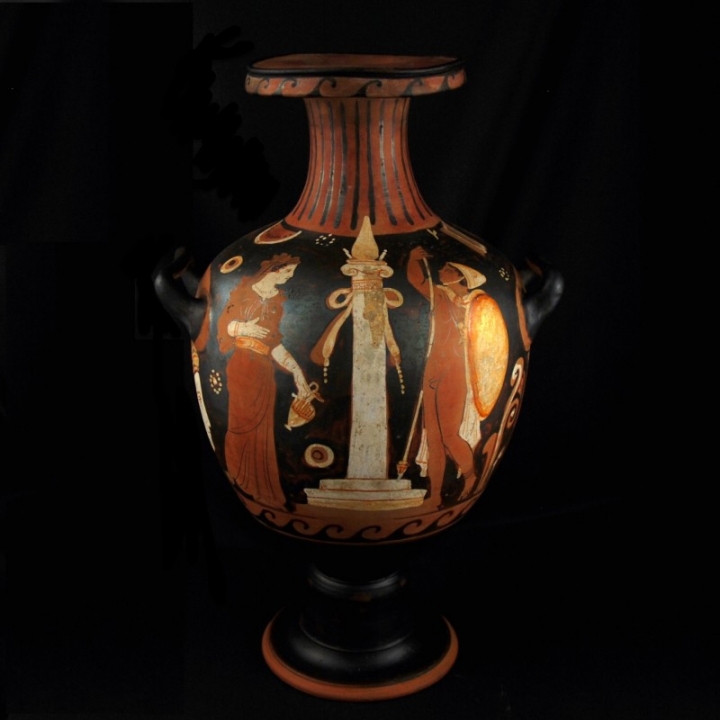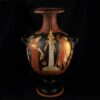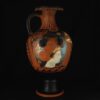Hydria of the Libation Painter with Electra and Orestes at Agamemnon’s Grave
Culture: Greek/Campanian
Period: ca. 330 B.C.
Material: Terracotta
Dimensions: 41 cm high
Price: Sold
Ref: 2191
Provenance: Collection Jacques Nabon de Bois, acquired 1970.
Condition: The foot re-attached, some retouching. A small restauration on the vertical handle on the neck. Otherwise intact. The image scene is wonderfully preserved.
Description: Monumental red-figure hydria of the Libation Painter, who was active in Capua around 330 B.C. The large scene depicts a warrior wearing only a chlamys (short travelling coat) with a Pilos helmet, round shield, lance and a sword buckled around his body. Opposite him a young woman in local attire, holding in her left hand an oenochoe and offering a sacrifice on an Ionic column with palmettes and a ribbon. This depiction is a very popular scene for vase paintings especially in Campania and Paestum: The encounter of Orestes and Electra at Agamemnon’s grave (see the tragedy “Choephor”, the second part of the Oresteia trilogy of Aeschylus). Orestes, son of Agamemnon and Clytemnestra, was raised at the royal household of Strophus, king of Phocis. As an adult he finally returned to Argos. In fear of revenge Clytemnestra degraded her daughter Electra, Orestes’ sister, to a servant and ordered her to permanently guarding Agamemnon’s grave. There she meets her brother, who swore to take revenge on his father’s death, once he found out about the circumstances of his death. Below each handle a female face with sakkos, jewelry, stephane and for the painter typical starring gaze and slightly grim mouth angles, facing the event.





